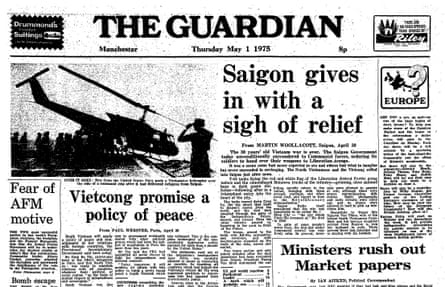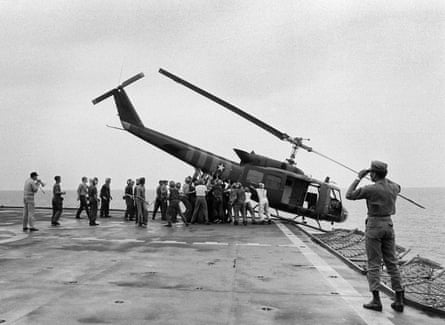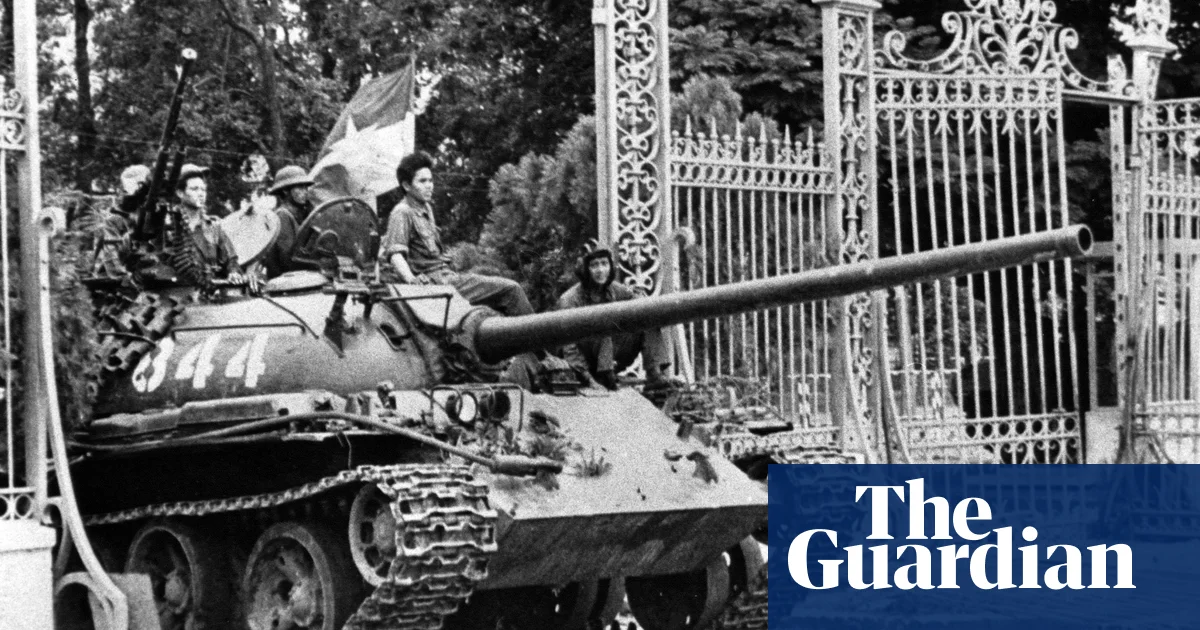The 30 years old Vietnam war is over. The Saigon government today unconditionally surrendered to communist forces, ordering its soldiers to hand over their weapons to Liberation troops. It was a scene some had never expected to see and others had tried to imagine but never succeeded in envisaging. The North Vietnamese and the Vietcong rolled into Saigon just after noon.
T-54 tanks flying the red and white flag of the Liberation Armed Forces going before and the camouflaged Molotova trucks of the infantry –grinning, olive skinned boys in dark green uniforms – following after in a triumphant entry into the heart of the city.
The tanks roared down Cong Ly, the big street that leads to Saigon’s centre from the north, and the first tank smashed through the gates of the Independence Palace, slewed, and turned. Then the other vehicles poured in, laagering in the park in front of the Palace.
The troops, armed to the teeth with AK-47s, automatics, and revolvers, and with machine-guns mounted on the roofs of the cabs, waved and smiled.
Two hours earlier and only 90 minutes after the final Americans had been evacuated from Saigon, President Duong Van Minh announced the surrender over the government radio in a brief speech. Minh, speaking slowly and sadly, said that “our policy as a government is national reconciliation and concord. To save further bloodshed, I now order the armed faces to stop fighting. I also ask the forces of the National Liberation Front to do the same. We are ready and waiting to hand over full administrative power to you.”

The Guardian, 1 May 1975.
Later, Brigadier-General Nguyen Huu Hanh, the highest-ranking General Staff officer left in the city, ordered all units to “remain calm,” wait until contacted by communist forces, and then hand over their weapons.
The order was not immediately obeyed. One fight, witnessed by UPI reporter, Alan Dawson, broke out in front of the Palace itself. Dawson spent 10 minutes tucked between two Vietcong soldiers behind a tree. The communists put out a tremendous volume of tank, machine-gun, and rifle fire, and Dawson was able to pull out.
When a boatload of people tried to set off down the Saigon river to the South China Sea, a Vietcong officer ordered a tank to fire a round across the ship’s bow. The boat turned around and returned to the Saigon dock. Crowds greeted a victory parade along Tu Do street apprehensively, according to UPI. Many people waved at the communist troops, and some of the soldiers waved back. The communists laughed and cheered and shouted, “Hello, comrade,” to bystanders from tanks bearing Vietcong flags.
According to Hanoi Radio, the Liberation Army had been ordered not only to occupy “all important positions and major lines of communication’” but to “dissolve all armed organisations of the puppet administration.” ‘It said troops had strict orders on how to behave. Lives and property of both Vietnamese and foreign residents should be protected.
The army command, the radio went on, had instructed all employees of the previous administration to report to their offices. “The command calls on the entire people to unite closely under the banner of the great cause of the National Liberation Front and the Provisional Revolutionary government of South Vietnam.” it said.
The Liberation Front issued an order saying: “Let all puppet army officers, soldiers, and air and naval personnel, no matter where they are hiding, quickly return to the nation, bringing with them aircraft, warships, and naval craft, and report in time to the Revolutionary administration.
Saigon Radio itself announced that the city was henceforth to be called Ho Chi Minh City – “the city which Uncle Ho dreamed of.” Ho died in 1969.
In spite of some people’s worst fears, the first day under communist control was relatively calm. In general, newsmen were allowed to operate at will, although there were severe communication difficulties. Radio photographs and radio circuits were ruled out, and no planes were allowed to land to pick up television film.

Navy personnel aboard the USS Blue Ridge push a helicopter into the sea off the coast of Vietnam in order to make room for more evacuation flights from Saigon, 29 April 1975. Photograph: JT/AP
